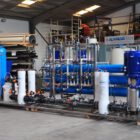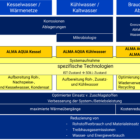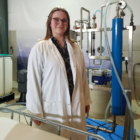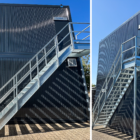Electroplating is an electrochemical process used to coat metal surfaces with a thin layer of another metal. The aim is to improve the properties of the base material, such as corrosion protection, hardness, conductivity or aesthetic aspects.
Table of contents
Technical background
The workpiece is immersed as a cathode in an electroplating bath containing an aqueous solution of metal ions. An external direct current source ensures that the metal ions from the solution are reduced and deposited on the surface of the workpiece. Typical coating metals are zinc, nickel, chromium, copper and silver.
Process steps
Preparation of the surface:
- Mechanical cleaning, e.g. grinding or brushing.
- Chemical cleaning by degreasing and pickling to remove oxides and impurities.
Galvanic bath:
- Composition of the electrolyte: metal salts, acids, additives to improve the coating properties.
- Temperature and pH value are precisely controlled to regulate the deposition rate and layer quality.
Coating:
- Direct current is applied, causing metal ions to be deposited at the cathode.
- At the same time, oxidation of the anode material, which supplies the metal ions, takes place at the anode.
Follow-up treatment:
- Rinsing, drying and, if necessary, heat treatment to optimize the coating properties.
Areas of application
- Automotive industry: Corrosion protection of car body parts by galvanizing.
- Electronics: Improving the conductivity and solderability of components by gold or silver plating.
- Mechanical engineering: Wear protection through chrome or nickel coatings.
- Jewelry industry: Aesthetic refinement through gold or rhodium plating.
Environmental and safety aspects
Electroplating processes generate wastewater that contains heavy metals and acids. These must be purified in special wastewater treatment plants, often in combination with precipitation and flocculation processes. Compliance with the legal requirements in accordance with the Waste Water Ordinance is essential.
Waste water treatment in electroplating
Wastewater from the electroplating industry often contains high concentrations of heavy metals, acids, alkalis and organic complexing agents. These represent a considerable burden on the environment and must be comprehensively treated before discharge or reuse. Wastewater treatment in the electroplating industry comprises several stages that are specifically designed to remove various pollutants.
1. neutralization precipitation
The first stage of wastewater treatment consists of neutralization and precipitation. Acids or alkalis are added to regulate the pH value of the wastewater. At an optimum pH value, heavy metals precipitate as poorly soluble hydroxides. These can then be removed by sedimentation or filtration.
The sludge produced during precipitation and filtration contains high concentrations of heavy metals and must be disposed of in accordance with legal requirements. Mechanical dewatering using chamber filter presses or decanters reduces the sludge volume and facilitates further treatment.
2. chemical-physical processes
Chemical-physical processes such as the addition of precipitants and flocculants help to further clarify the wastewater. These processes are particularly effective in removing fine particles and heavy metal compounds that have not been completely separated by neutralization.
Chromate reduction
Electroplating wastewater often contains hexavalent chromium (Cr(VI)), which is highly toxic. Reduction to trivalent chromium (Cr(III)) is achieved by using reducing agents such as sodium bisulphite. The Cr(III) is then removed as chromium hydroxide by neutralization precipitation.
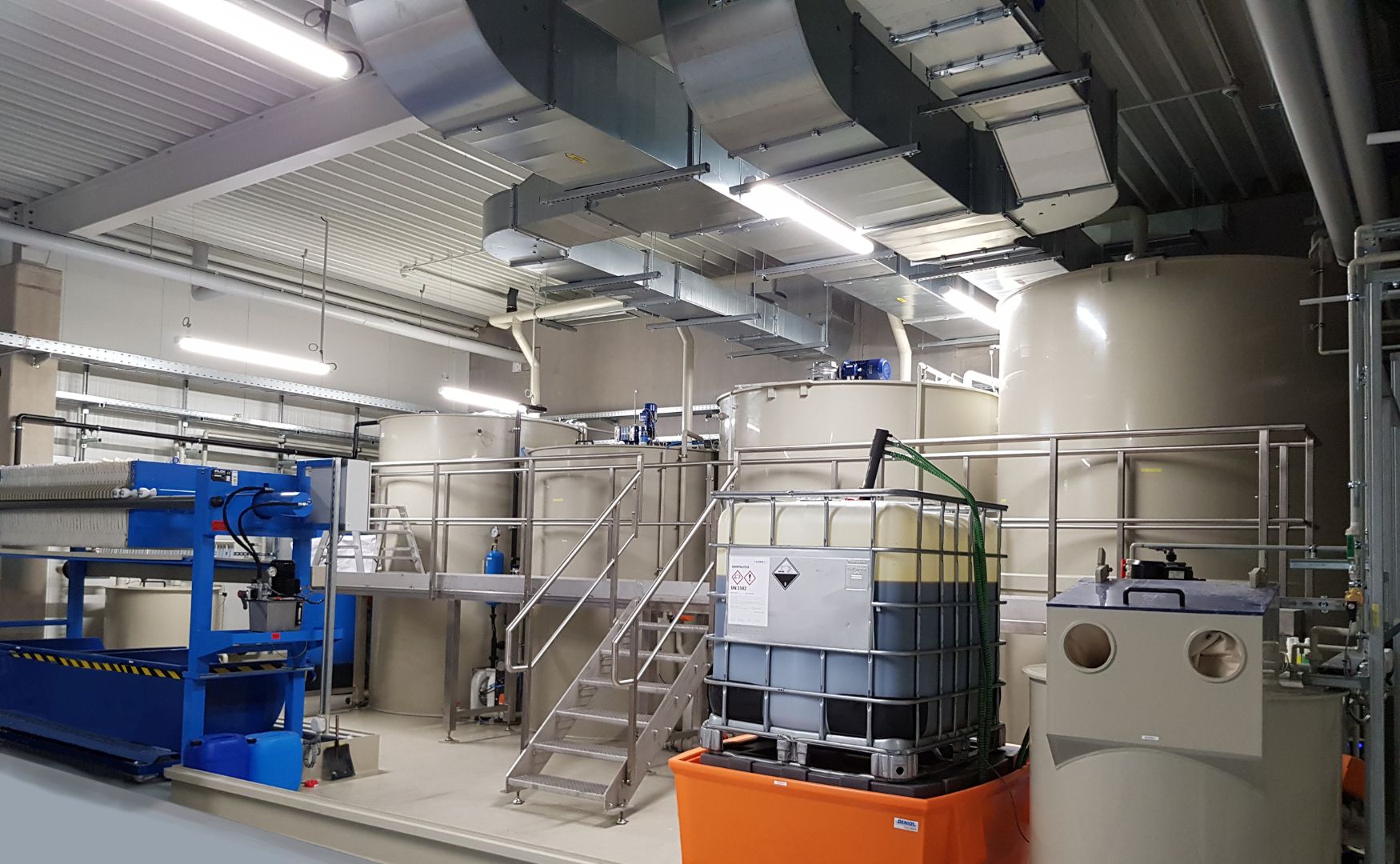
Photo: Our CP system ALMA CHEM MCW with sludge dewatering and chromate reduction
3. ion exchange
Ion exchange systems can be used to remove remaining traces of heavy metals and other ions from wastewater. This method offers a very high purification performance and makes it possible to meet legal limits even with high requirements.

Photo: Our CP system ALMA CHEM MCW with sludge dewatering, ion exchange ALMA ION and chromate reduction, installed in the double-decker container ALMA MODUL
4. membrane process
Membrane processes such as reverse osmosis or nanofiltration offer an effective method of recovering water and concentrating the pollutants in a retentate. These methods are particularly suitable when high water quality is required for reuse in the process.
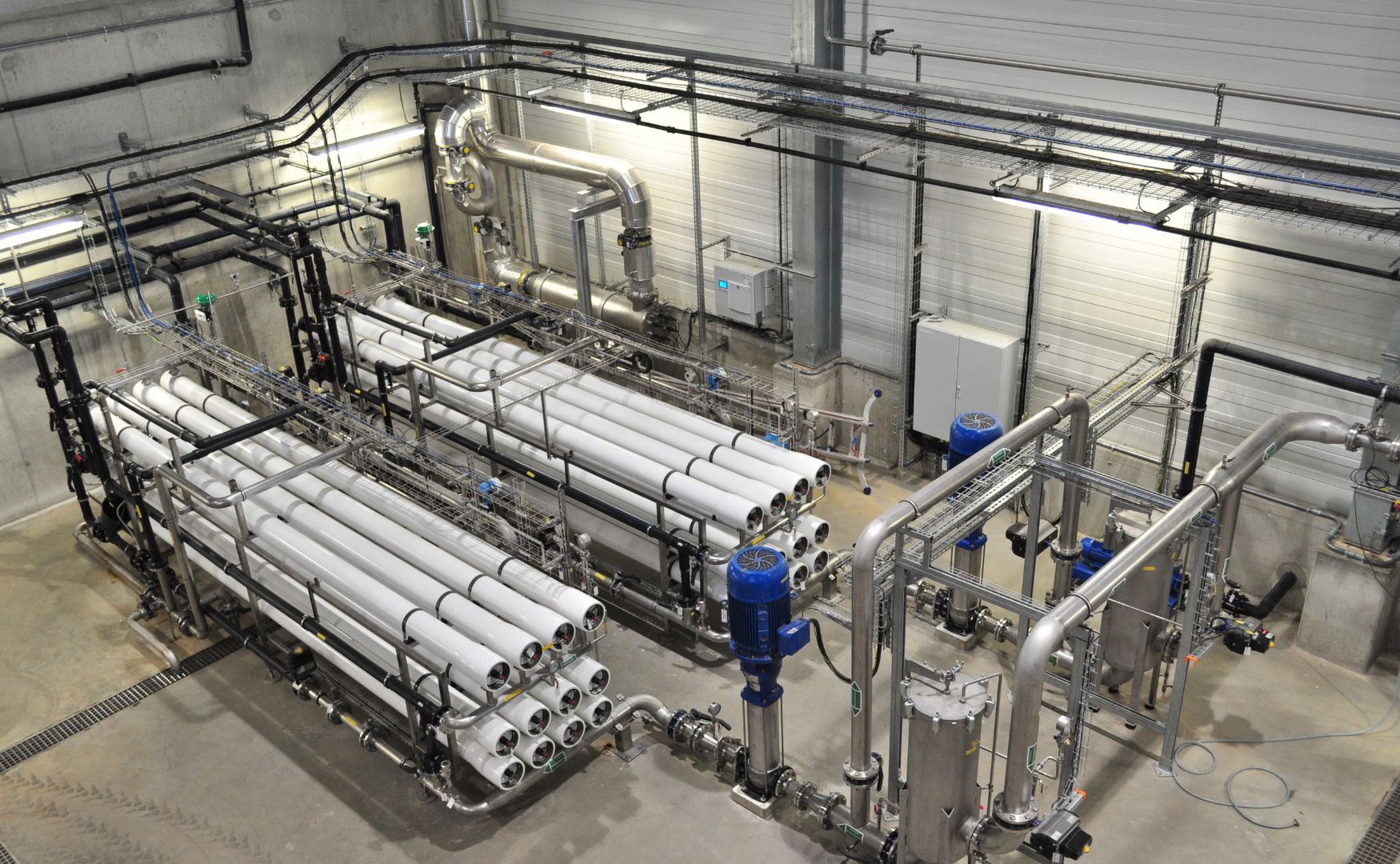
Photo: Our ALMA OSMO reverse osmosis system for water recycling in electroplating plants
Conclusion
Electroplating is an indispensable process in many industries, but it places high demands on process control and wastewater treatment. Efficient systems and strict environmental controls ensure sustainable and economical use.
For further information on our products, please feel free to contact us at any time!




